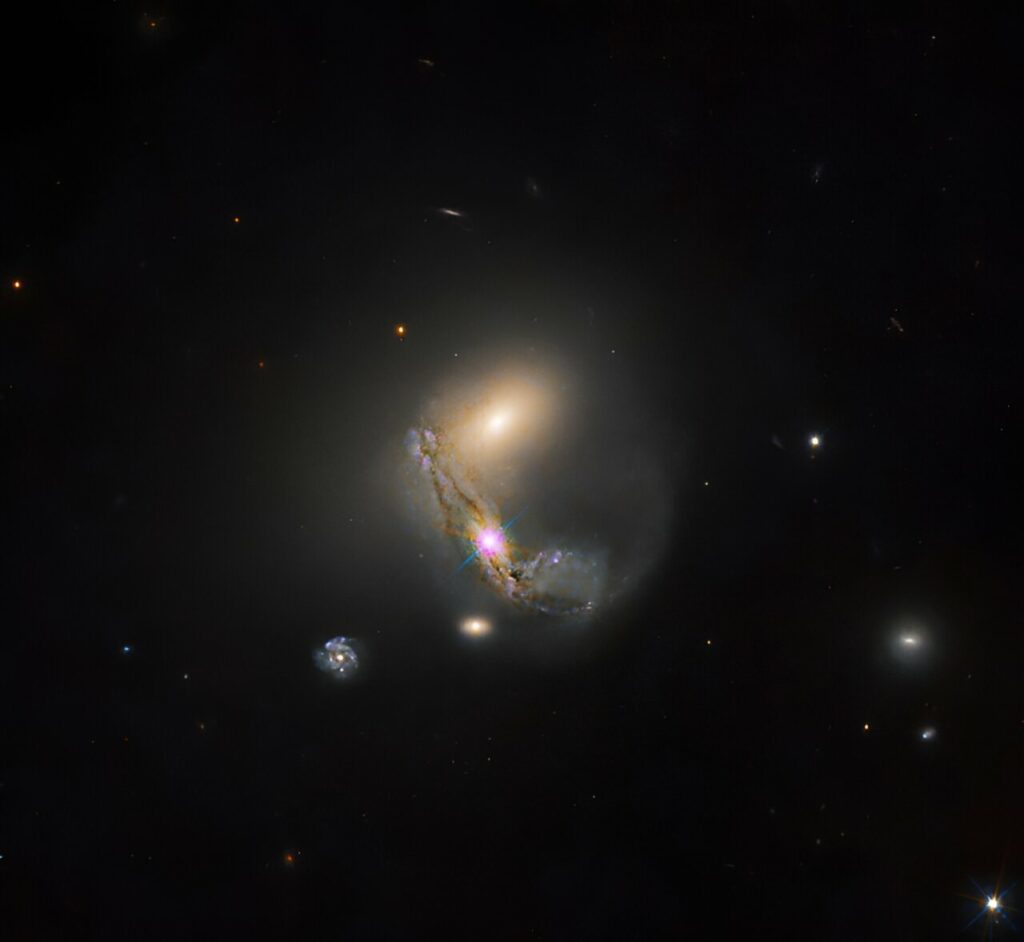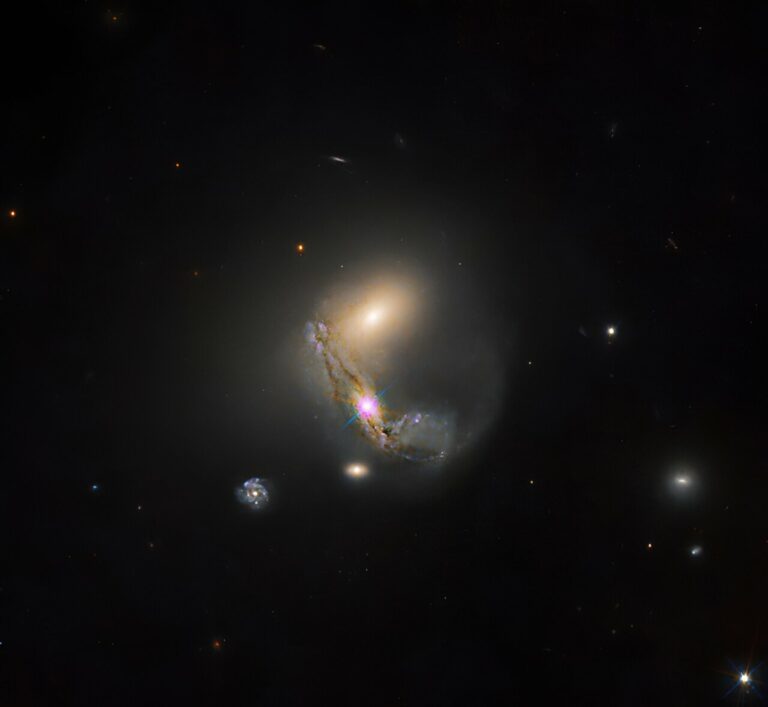Picture: Hubble Captures Radiant Cluster of Galaxies in LEDA 60847
This latest image captured by the NASA Hubble Space Telescope showcases a collection of interacting galaxies called LEDA 60847.
LEDA 60847 is categorized as an active galactic nuclei, or AGN. AGNs possess a supermassive black hole situated in the central region of the galaxy, which is actively accumulating material. As a result, the AGN emits radiation across the entire electromagnetic spectrum, radiating with immense brightness. By examining powerful AGNs that are in close proximity to us, astronomers can gain a deeper understanding of the growth of supermassive black holes and their impact on galaxies.

Galaxy mergers are relatively frequent events. The formation of larger galaxies often occurs through the merging of smaller galaxies. Even our own Milky Way bears evidence of past mergers, as it contains remnants of other galaxies. Astronomers estimate that anywhere between 5% and 25% of all galaxies are currently undergoing the process of merging.
This particular image of LEDA 60847 combines data from Hubble across ultraviolet, visible, and near-infrared wavelengths. The Hubble telescope’s unique capability to observe across such a wide range of wavelengths is what sets it apart. Different types of light within the electromagnetic spectrum provide astronomers with distinct insights into our universe. Ultraviolet light allows us to trace the luminosity of stellar nurseries and identify the hottest stars. Visible light enables us to observe moderate-temperature stars and materials, providing a perspective similar to what our own eyes would perceive. Lastly, near-infrared light has the ability to penetrate cold dust, enabling the study of warm gas, dust, and relatively cool stars.
This article is republished from PhysORG under a Creative Commons license. Read the original article.
Do not forget to share your opinion with us to provide you with the best posts !




0 Comments